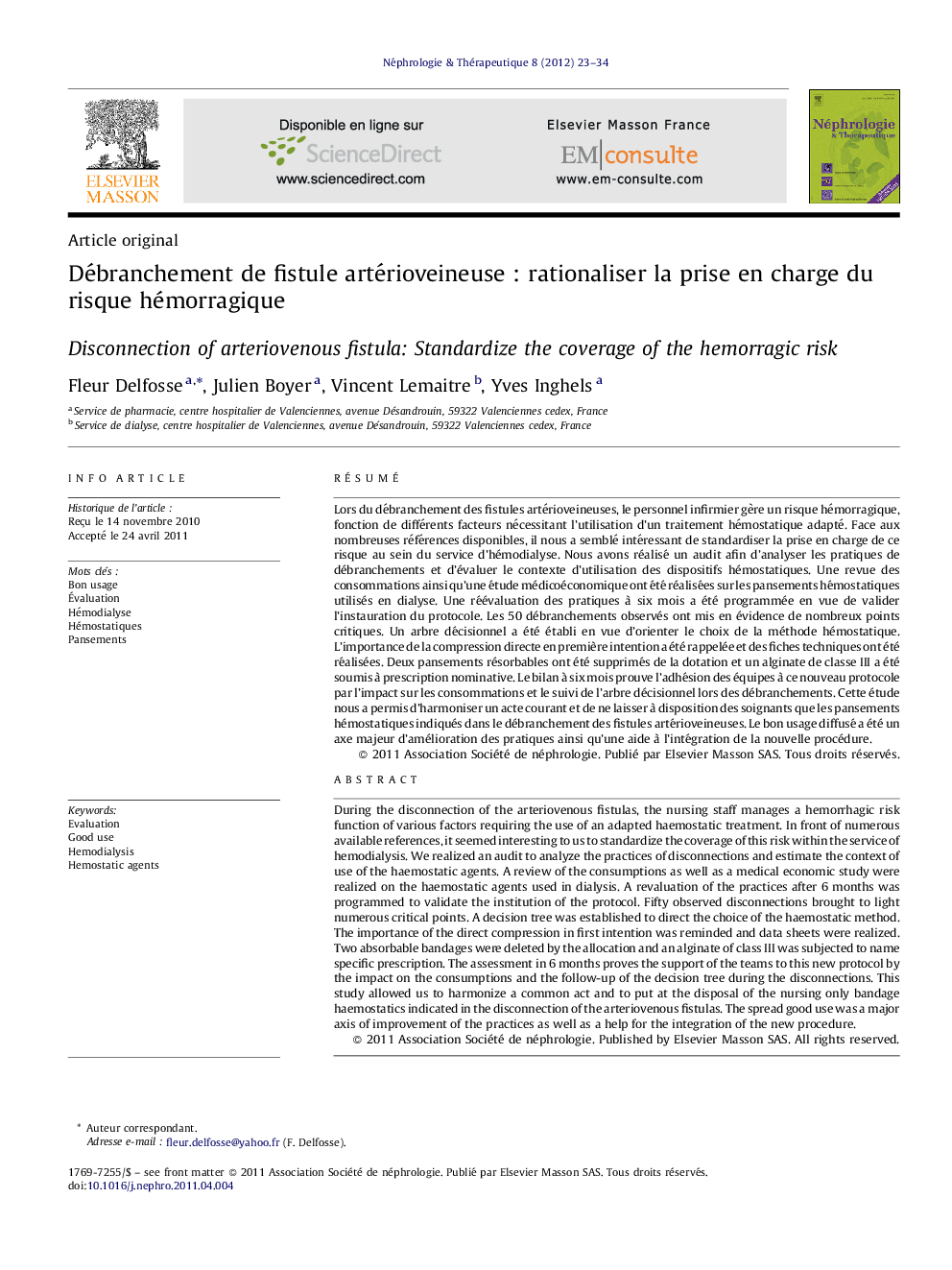| کد مقاله | کد نشریه | سال انتشار | مقاله انگلیسی | نسخه تمام متن |
|---|---|---|---|---|
| 3894783 | 1250128 | 2012 | 12 صفحه PDF | دانلود رایگان |

RésuméLors du débranchement des fistules artérioveineuses, le personnel infirmier gère un risque hémorragique, fonction de différents facteurs nécessitant l’utilisation d’un traitement hémostatique adapté. Face aux nombreuses références disponibles, il nous a semblé intéressant de standardiser la prise en charge de ce risque au sein du service d’hémodialyse. Nous avons réalisé un audit afin d’analyser les pratiques de débranchements et d’évaluer le contexte d’utilisation des dispositifs hémostatiques. Une revue des consommations ainsi qu’une étude médicoéconomique ont été réalisées sur les pansements hémostatiques utilisés en dialyse. Une réévaluation des pratiques à six mois a été programmée en vue de valider l’instauration du protocole. Les 50 débranchements observés ont mis en évidence de nombreux points critiques. Un arbre décisionnel a été établi en vue d’orienter le choix de la méthode hémostatique. L’importance de la compression directe en première intention a été rappelée et des fiches techniques ont été réalisées. Deux pansements résorbables ont été supprimés de la dotation et un alginate de classe III a été soumis à prescription nominative. Le bilan à six mois prouve l’adhésion des équipes à ce nouveau protocole par l’impact sur les consommations et le suivi de l’arbre décisionnel lors des débranchements. Cette étude nous a permis d’harmoniser un acte courant et de ne laisser à disposition des soignants que les pansements hémostatiques indiqués dans le débranchement des fistules artérioveineuses. Le bon usage diffusé a été un axe majeur d’amélioration des pratiques ainsi qu’une aide à l’intégration de la nouvelle procédure.
During the disconnection of the arteriovenous fistulas, the nursing staff manages a hemorrhagic risk function of various factors requiring the use of an adapted haemostatic treatment. In front of numerous available references, it seemed interesting to us to standardize the coverage of this risk within the service of hemodialysis. We realized an audit to analyze the practices of disconnections and estimate the context of use of the haemostatic agents. A review of the consumptions as well as a medical economic study were realized on the haemostatic agents used in dialysis. A revaluation of the practices after 6 months was programmed to validate the institution of the protocol. Fifty observed disconnections brought to light numerous critical points. A decision tree was established to direct the choice of the haemostatic method. The importance of the direct compression in first intention was reminded and data sheets were realized. Two absorbable bandages were deleted by the allocation and an alginate of class III was subjected to name specific prescription. The assessment in 6 months proves the support of the teams to this new protocol by the impact on the consumptions and the follow-up of the decision tree during the disconnections. This study allowed us to harmonize a common act and to put at the disposal of the nursing only bandage haemostatics indicated in the disconnection of the arteriovenous fistulas. The spread good use was a major axis of improvement of the practices as well as a help for the integration of the new procedure.
Journal: Néphrologie & Thérapeutique - Volume 8, Issue 1, February 2012, Pages 23–34